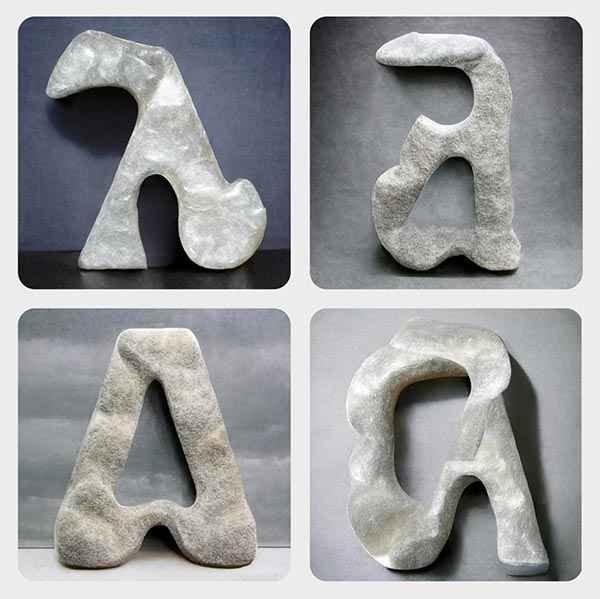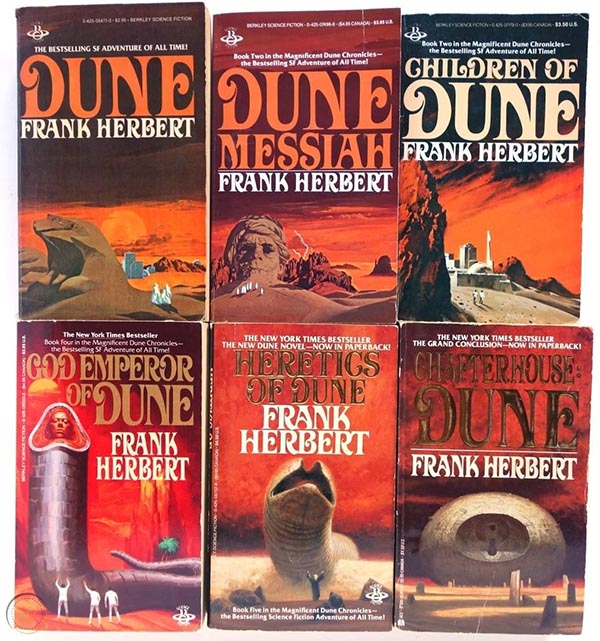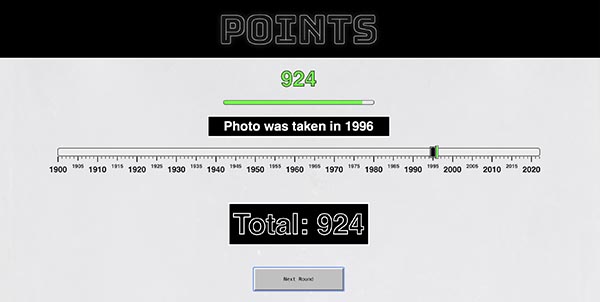Type Trends
Via Print magazine, Monotype has released its 2023 Monotype Type Trends Report, an analysis of the year’s hottest type trends and a collection of examples. Click through for the whole list, but some top type tropes:
The “Mix Up” trend is all about more is more— “Why use three colors when you can use thirty?” says Monotype. “Mix Up” reflects the way our culture continues to value diversity and inclusivity in all forms, including typography.
The “Superhero” trend is
akin to letters found in comic books features outlines and shadows, often tilted, skewed, or curved into perspective. “It’s explosive in form and color,” says Monotype.
At the same time,
In direct contrast to the “Mix Up” and “Superhero” trends is the austere “Super Sober,” popular in startup and lifestyle spaces. Its simplicity and minimalism is meant to create a sense of calm and zen in an otherwise noisy landscape of competing brands, apps, and notifications.

Joli. Agency/designer: SKINN BRANDING AGENCY.
We don’t know about this one:
“Flux” encompasses letters in motion— or those with the appearance of being in motion. Movement is critical to grabbing the attention of the 2023 consumer and viewer, which is where variable fonts and animation come into play.

2022 Brand New Conference. Agency/designer: UnderConsideration and Sultan Jum/Geo.
It’s perfect if legibility is not a concern, or you haven’t seen your optometrist in a while.
And, of course, AI-based typography. You knew that was coming…
“AI will change the art and design world; we just don’t know exactly how it will pan out yet,” says Monotype. Artists are already dabbling in AI Land, with controversy around these tools also on the rise.

Artificial Typography.Agency/designer: Andrea A. Trabucco-Campos and Martín Azambuja.
Check out the full report here.
A Worm Turns
Are you a fan of Frank Herbert’s classic Dune series of scifi novels? And typography? If so, then good news! Here is a great worm rabbit hole to go down: Fonts In Use tracks down the typeface “that defined the visual identity of the science fiction series and its author.” And yet, very few people have ever been able to figure out what typeface it specifically is.

Source: www.worthpoint.com
The reason it has been so difficult to pin down is that it was actually a hand-drawn variant of Davison Art Nouveau.
Davison Art Nouveau was drawn by lettering artist Meyer M. “Dave” Davison for Photo-Lettering (PLINC), a typesetting company in New York City. It was first shown in PLINC’s 1967 Alphabet Yearbook. Basically a bold all-caps roman with long bracketed serifs, Davison Art Nouveau comes in three variants of increasing ornamentation: Art Nouveau with Flourishes, Modified, and Ornate.
Each variant includes additional alternates, some of which sport swashes, fox tail extensions, and curlicues that reach above and below the line. Depending on which glyphs are selected, the look of words set in Davison Art Nouveau ranges from sober to discreetly flowery to full-blown carnivalesque. That’s one reason this face isn’t easy to track down – it can take on so many different appearances. The other reason is that it was exclusive to PLINC. And PLINC was a service provider, not a font retailer. You couldn’t buy or license a copy of Art Nouveau. If you wanted to have some text set in this font, you had to place an order at their Manhattan office at 216 East 45th Street, in person or by phone or post.
So how did it come to be associated with Dune?
The liaison between Dune and Davison Art Nouveau started in September 1975, when the typeface was used by Berkley Medallion for a paperback edition of the first two novels. At the time, the Berkley imprint was owned by New York-based publisher G.P. Putnam’s Sons. When Berkley Putnam published the first hardcover edition of the third novel, Children of Dune, in 1976, the new typographic identity was applied there, too. Later on, Putnam used the typeface on the jackets for hardback editions of other, unrelated books authored (or coauthored) by Frank Herbert.
…The uncredited typographer worked with the Modified variant – at least that’s what the Awith curved bar and the E with curling middle bar shown in the limited typeface samples I’ve been able to compare suggest. The letterforms were used with varying degrees of condensation, something that was easily done with phototype. Given that Art Nouveau came with so many alternates, its use for Dune and beyond is impressively consistent. Across the dozens of applications, only a handful of variant glyphs were employed: see for example the two forms for A, one of them with a right stem that curves inward; the R with the curling terminal for “Trilogy” versus the one in “Frank Herbert” on the box set below; or the S with and without ball terminal at the top.
Friz Quadrata (!) makes an appearance as the supporting font.
Checking All the Boxes
You’d never guess what has seen a recent surge in demand. Give up? Newspaper boxes. Remember them? The once ubiquitous street corner metal coin-operated bins that dispensed newspapers. Indeed, Via Core77, the company that originally manufactured newspaper boxes, Pennsylvania-based Impact Racks, has now started collecting, refurbishing, reusing, and upcycling them.
“Every week, we drive hundreds and hundreds of miles to pick up retired racks,” writes the company, which has been in business for 30 years. “Often these are racks we initially sold to the newspapers.”
“We bring them back to our shop where we begin the upcycling process. After removing the head of the newspaper rack we sand down the entire box. Next we prime and coat them with fresh paint and decals.”
Buyers have repurposed the racks into record-playing stations, Little Free Libraries and donation boxes.


Racks run the gamut from $260 to $450. More importantly, they write, “each purchase helps to keep around 85 lbs. of metal out of the landfill.”
Oy VAI
Now AI is getting into some existential areas. Via the Jerusalem Post, New York Senior Rabbi Josh Franklin, of the Jewish Center of the Hamptons, delivered a sermon written entirely by AI, specifically ChatGPT. If we were Rabbi Jonathan Sacks, we’d have mixed feelings about the results:
After reading the AI-written piece, Rabbi Franklin asked his congregation to guess who had written the sermon. In response, the congregation incorrectly guessed that Rabbi Jonathan Sacks had written the piece.
Although the sermon was “excellently written,” Franklin was not in fear of losing his job
because technology lacks “nefesh” (Hebrew for soul). While technology might be able to mimic emotions and write in-depth about human relationships, it cannot feel and it has no soul, the rabbi argued.
This then led to a Talmudic debate.
Rabbi Gershon Winkler has argued that if golems, clay humanoid creatures created by Jews to protect Jews, can be considered Jewish then a robot might one day be able to be called Jewish. If a robot is considered Jewish, it is because the robot would have a Jewish soul.
Would it celebrate a bot mitzvah?
Telling Time
Some decades have a highly distinctive style—in fashion, in color palette, in technology, in car design. While watching old movies and TV shows or seeing old photos, it’s common to say, “That’s very 1970s,” for example. How good are you at identifying specific time periods? Here’s an interesting visual game called Chronophoto wherein you are shown a photograph and have to identify what year it’s from. (Needless to say, you will never have the option of it being before the 20th century.)

1995?

Damn.
Greenwich Moon Time
This decade, there appears to be a renewed interest in returning to the Moon, with the aim being to set up human settlements. (Pro tip: avoid storing nuclear waste there as it can lead to unforeseen consequences.) At any rate, Naturemagazine raises an interesting question: what time is it on the Moon?
The Moon doesn’t currently have an independent time. Each lunar mission uses its own timescale that is linked, through its handlers on Earth, to coordinated universal time, or UTc — the standard against which the planet’s clocks are set. But this method is relatively imprecise and spacecraft exploring the Moon don’t synchronize the time with each other. The approach works when the Moon hosts a handful of independent missions, but it will be a problem when there are multiple craft working together. Space agencies will also want to track them using satellite navigation, which relies on precise timing signals.
Complicating matters is that, because the Earth and the Moon have gravitational fields of different strengths, clocks don’t “tick” at the same rate on either body.
Defining lunar time is not simple. Although the definition of the second is the same everywhere, the general theory of relativity dictates that clocks tick slower in stronger gravitational fields. The Moon’s gravitational pull is weaker than Earth’s, meaning that, to an observer on Earth, a lunar clock would run faster than an Earth one. Gramling estimates that a lunar clock would gain about 56 microseconds over 24 hours. Compared with one on Earth, a clock’s speed would also subtly change depending on its position on the lunar surface, because of the Moon’s rotation, says Tavella. “This is a paradise for experts in relativity, because you have to take into account so many things,” she adds.
This may also explain why the clock on the microwave oven always ends up running faster than the one on the stove. Or, maybe not. Various interested parties met in November to try to sort it all out.
The most pressing need for lunar time comes from plans to create a dedicated global satellite navigation system (GNSS) for the Moon, similar to how GPS and other satellite navigation networks enable precise location tracking on Earth. Space agencies plan to install this lunar GNSS from around 2030. ESA approved a lunar satellite navigation project called Moonlight at its ministerial council meeting on 22 and 23 November 2022 in Paris, and NASA established a similar project, called Lunar Communications Relay and Navigation Systems, last January.
Whatever they decide, let’s hope it doesn’t involve the lunar equivalent of Daylight Savings Time.
Very Mean Time Indeed
Here’s a quick quiz. Do you think you could tell the difference between a $5,000 luxury watch and a $25 wall clock for kids? If not, Rolex would like an amicus brief, because they are suing Oyster & Pop, a small family-run business that sells analog wall clocks designed to teach children how to tell time on non-digital displays. Says Gizmodo:
The company’s unique name, Oyster & Pop, was inspired by a road, Oyster Bend, where the family grew up in England. But it’s that unique name that Rolex, a company that was valued at over $8 billion last year and is synonymous with luxury, has an issue with. One of Rolex’s more recognizable watch models is the Oyster Perpetual, named after the company’s first model to feature a hermetically sealed case that keeps water and dust out to protect the delicate mechanical movement inside.
Yeah, but can it tell time on the Moon?
Lawyers representing Rolex want Oyster & Pop to change the company’s name and all of its branding, including its logo and website, because the watchmaker worries the average consumer, who is probably not in a position to drop $5,000 on a watch that does nothing but tell time, will assume Oyster & Pop’s clocks are associated with, or directly from, the Swiss company.
Naturally, “changing all of Oyster & Pop’s branding to comply with Rolex’s demands would be an unbearable financial burden for their small business.”
Oyster & Pop currently has a petition on change.org, “Help STOP ROLEX from closing down a small women-owned, family business,” with over 70,000 signatures from supporters.
The Grand Central Oyster Bar may be next.
Graphene Finds the “Magic Angle”
Was it a good week for graphene news? It’s always a good week for graphene news! Researchers at MIT and National Institute for Materials Science in Tsukuba, Japan, have found a new property of so-called “magic-angle” graphene: “superconductivity that can be turned on and off with an electric pulse, much like a light switch.” From (who else?) Graphene-Info:
Magic-angle graphene refers to a very particular stacking of graphene — an atom-thin material made from carbon atoms that are linked in a hexagonal pattern resembling chicken wire. When one sheet of graphene is stacked atop a second sheet at a precise “magic” angle, the twisted structure creates a slightly offset “moiré” pattern, or superlattice, that is able to support a host of surprising electronic behaviors.
In printing, moiré is bad; in graphene science, it’s good.
That discovery was a milestone in the field of “twistronics,” which explores how certain electronic properties emerge from the twisting and layering of two-dimensional materials.
There’s a new term for the lexicon: “twistronics.” (Anyone else envisioning scientists playing Twister in the lab? No, huh? OK.)
The discovery could lead to ultrafast, energy-efficient superconducting transistors for neuromorphic devices — electronics designed to operate in a way similar to the rapid on/off firing of neurons in the human brain.
Signs of the Times, Part the Infinity: That Sinking Feeling
Here at WhatTheyThink, we pay attention to signage because it’s our job to—but also because, in many cases, signage contains important messages, often about potential dangers. (For example, we’re not likely to admire the design and construction if a sign even as we ignore its content and plummet into an open manhole.) However, via Boing Boing, in Tracy, Calif., on more than one occasion, drivers ignored more than one “ROAD CLOSED” sign and other “‘clear, visible, and unobstructed’ signs and barricades” and then proceeded to plunge into a giant sinkhole.
“THIS CAN’T BE REAL!” exasperated police hilariously commented on their Facebook post. “It happened again. We can’t make this stuff up.”

Image: California Highway Patrol, Tracy, via Facebook (screengrab)
Don’t ignore signs!
Power Napping
Do you find yourself needing (or tending) to nap on the go? Do you lack a proper pillow for doing so? If yes, then good news! Via Core 77, the NapEazy is a telescoping pillow designed for difficult napping locations.


We wonder how easy that would be to get through airport security. At any rate, if mobile napping is your thing, they’re a steal at $69.
Garlic Snubbed
Trader Joe’s says: “We asked our customers the question: If you were to spend the rest of your life on a deserted island, which nine Trader Joe’s products would you take with you?” Well, we’d be inclined to say whatever could be used as a flotation device or ersatz raft, but we suspect that was not the answer they were looking for.
Indeed, this was Trader Joe’s Customer Choice Awards. So, what was this year’s winner? Number one overall were “Chili & Lime Flavored Rolled Corn Tortilla Chips.” The top beverage was “Sparkling Honeycrisp Apple Juice Beverage,” while “Butter Chicken with Basmati Rice” was voted best entrée. (Here in the Around the Web Cultural Accretion Bunker, several of Trader Joe’s Indian meals often find their way into the microwave.) However, not everyone was happy with the results, as the AtW intranet lit up with “GARLIC DIP SNUBBED IN ALL CATEGORIES.”
The injustice!
Taking Wing
Here at Around the Web, we certainly do not condone the committing of felonies, but we have to admit, if one were going to engage in an embezzlement scheme, we’d be on board with this. From CBS News:
A former official in a school district in the Chicago suburb of Harvey
Founded by a giant invisible rabbit. We continue.
is accused in a bizarre scheme involving more than $1 million worth of stolen chicken wings, CBS Chicago reports.
The official in question, Vera Liddell, is the former director of food services at Harvey School District 152, and we do stress “former.”
The Cook County State’s Attorney’s office alleges that Liddell launched an embezzlement scheme that resulted in the theft of wings that cost more than $1.5 million in taxpayer money.
In other words, they cried fowl.
…From July 2020 until February 2022, Liddell placed hundreds of unauthorized orders for food items – including 11,000 cases of chicken wings for which the district was billed more than $1.5 million – through school district vendor Gordon Food Service, prosecutors said.
Then the feathers started to fly.
But in January 2022, the district business manager conducted a routine mid-year audit and discovered the food service department was more than $300,000 over its annual budget with the school year only about half over, prosecutors said.
A closer review uncovered individual invoices signed by Liddell for absurd quantities of chicken wings, prosecutors said.
Even more bizarrely:
The school district doesn’t even serve chicken wings to students because they contain bones, prosecutors said.
Authorities were buffaloed:
Prosecutors said it wasn’t clear what she did with the chicken wings.
They probably won’t believe her poultry excuses.
Did anything catch your eye “around the Web” this week? Let us know at [email protected].
This Week in Printing, Publishing, and Media History
January 30
1969: The Beatles’ last public performance, on the roof of Apple Records in London. The impromptu concert is broken up by the police.
January 31
1930: 3M begins marketing Scotch Tape.
1949: These Are My Children, the first television daytime soap opera, is broadcast by the NBC station in Chicago.
1956: English author, poet, and playwright, creator of Winnie-the-Pooh A. A. Milne dies (b. 1882).
2020: The United Kingdom’s membership within the European Union ceases in accordance with Article 50, after 47 years of being a member state.
February 1
1462: German lexicographer, historian, and cryptographer Johannes Trithemius born. His famous treatise In Praise of Scribes implored monks to not abandon manuscript copying. However, his need to distribute a large number of these treatises quickly resulted in his having to have it printed on a printing press, a great moment of historical irony.
1851: English novelist and playwright Mary Shelley dies (b. 1797).
1884: The first volume (A to Ant) of the Oxford English Dictionary is published.
1896: La bohème premieres in Turin at the Teatro Regio (Turin), conducted by the young Arturo Toscanini.
1902: American poet, social activist, novelist, and playwright Langston Hughes born.
1904: American humorist and screenwriter S.J. Perelman born.
1938: American drummer and singer (Mothers of Invention) Jimmy Carl Black born. He was the Indian of the group.
1942: Voice of America, the official external radio and television service of the United States government, begins broadcasting with programs aimed at areas controlled by the Axis powers.
1942: Welsh actor, director, screenwriter, and Python Terry Jones born.
1964: The Beatles have their first number one hit in the United States with “I Want to Hold Your Hand.”
1996: The Communications Decency Act is passed by the U.S. Congress, apparently.
February 2
506: Alaric II, eighth king of the Visigoths promulgates the Breviary of Alaric (Breviarium Alaricianum or Lex Romana Visigothorum), a collection of “Roman law.”
1468: Johannes Gutenberg dies (b. 1398).
1882: Irish novelist, short story writer, and poet James Joyce born.
1887: In Punxsutawney, Pennsylvania the first Groundhog Day is observed. Again and again and again...
1922: Ulysses by James Joyce is published. Yes.
February 3
1690: The colony of Massachusetts issues the first paper money in the Americas.
1811: American journalist and politician Horace Greeley born.
Tolbert Lanston. Born 3rd Feb 1844. Happy Birthday! Inventor or Monotype machines circa 1890. His machines used coding! The Irish font monotype keyboard is @NatPrintMuseum #Dublin
— Graham Prole (@GrahamProle) February 3, 2020
Also #Monotype #Ohio #TolbertLanston #HotMetal #Letterpress pic.twitter.com/P38X7Av5fh
1907: American author and philanthropist James A. Michener born, in rather epic fashion.
1947: American novelist, essayist, and poet Paul Auster born.
1947: English singer-songwriter and guitarist Dave Davies born.
1959: The day the music died: Rock and roll musicians Buddy Holly, Ritchie Valens, and J. P. “The Big Bopper” Richardson are killed in a plane crash near Clear Lake, Iowa.
February 4
1859: The Codex Sinaiticus is discovered in Egypt.
1960: American composer and playwright (Rent) Jonathan Larson born.
2004: Facebook, a mainstream online social networking site, is founded by Mark Zuckerberg.
2020: The COVID-19 pandemic causes all casinos in Macau to be closed down for 15 days.
February 5
1909: Belgian chemist Leo Baekeland announces the creation of Bakelite, the world's first synthetic plastic.
1919: Charlie Chaplin, Mary Pickford, Douglas Fairbanks, and D. W. Griffith launch United Artists.
1924: The Royal Greenwich Observatory begins broadcasting the hourly time signals known as the Greenwich Time Signal.
1926: American publisher Arthur Ochs Sulzberger born.
1940: Swiss painter, sculptor, and set designer (Alien) H. R. Giger born.













